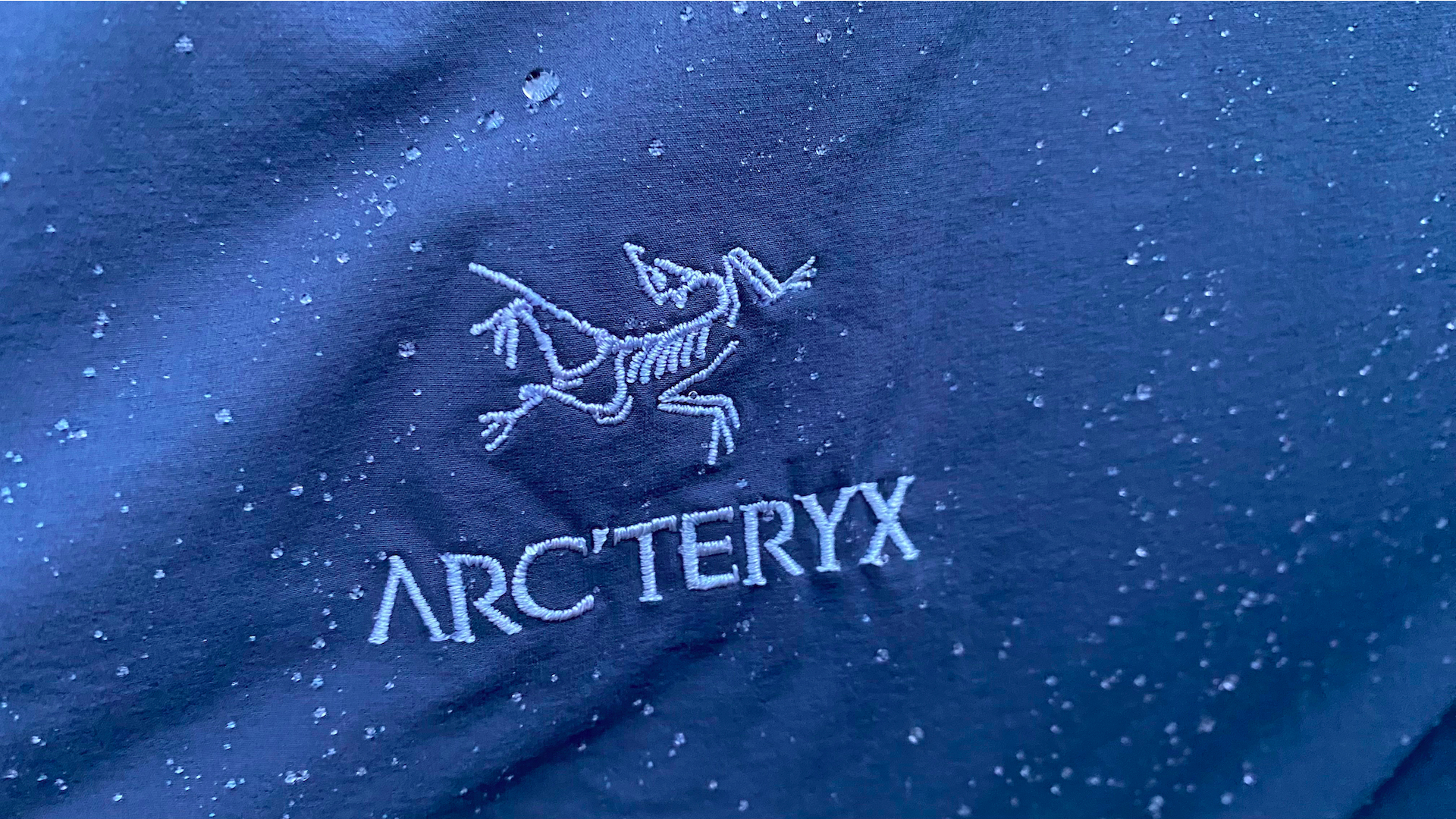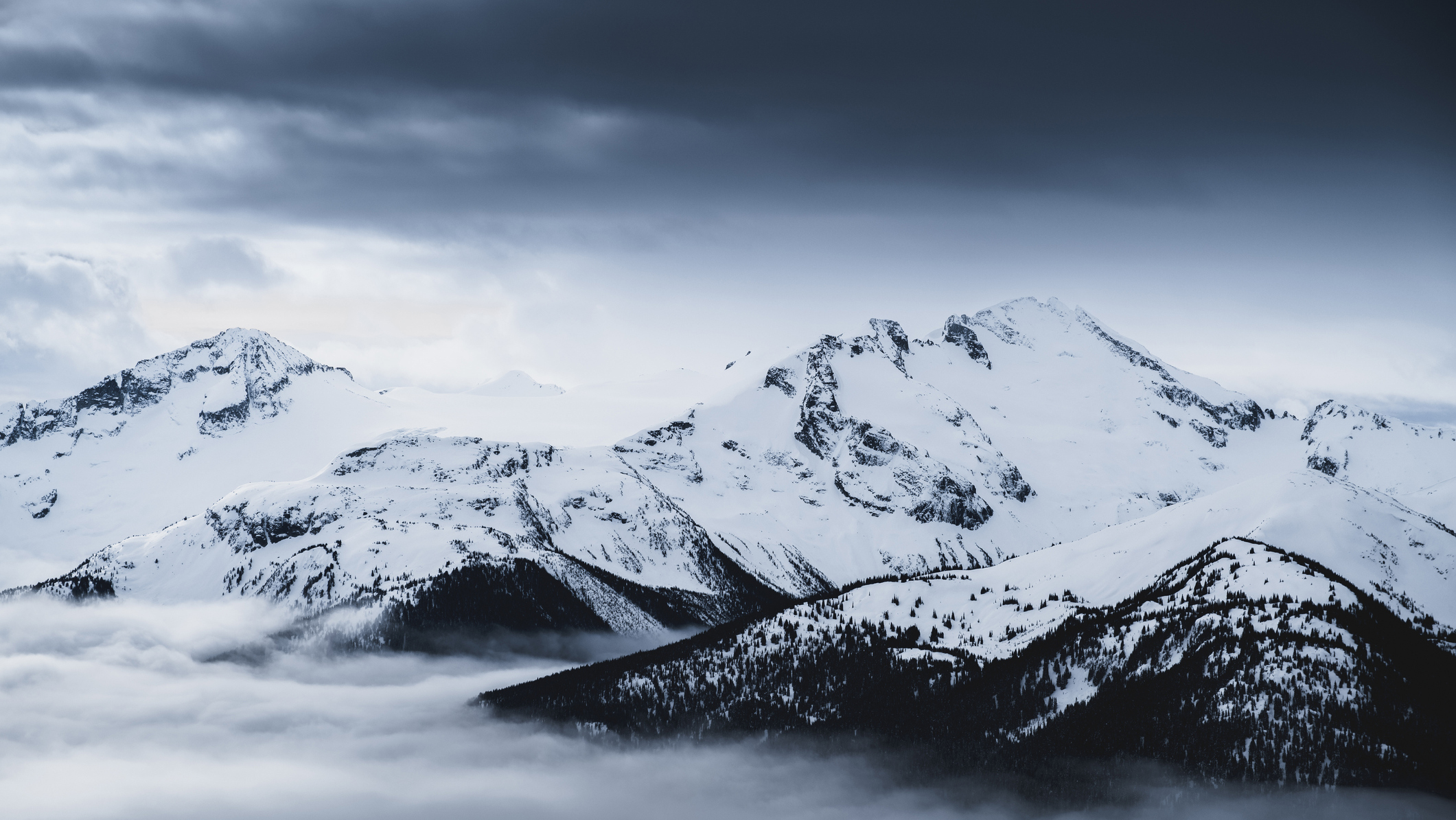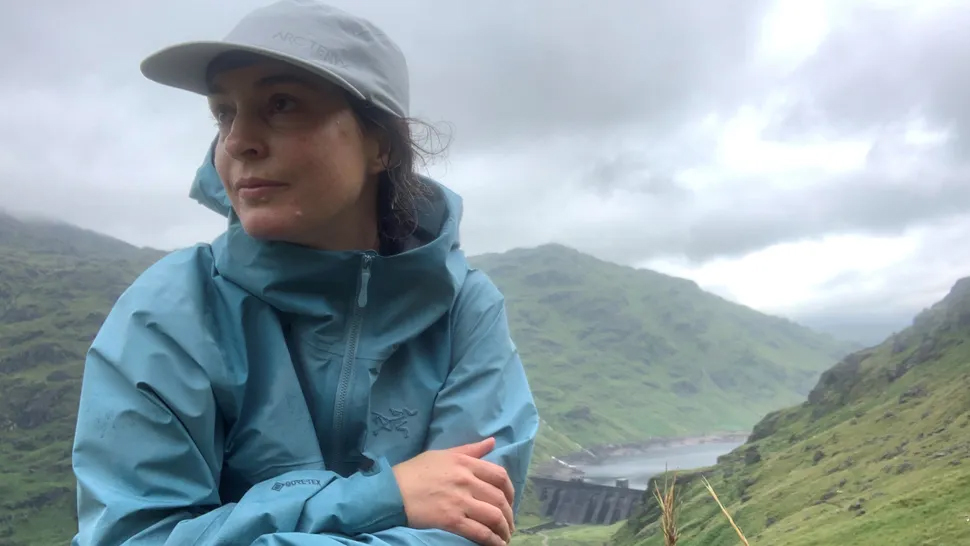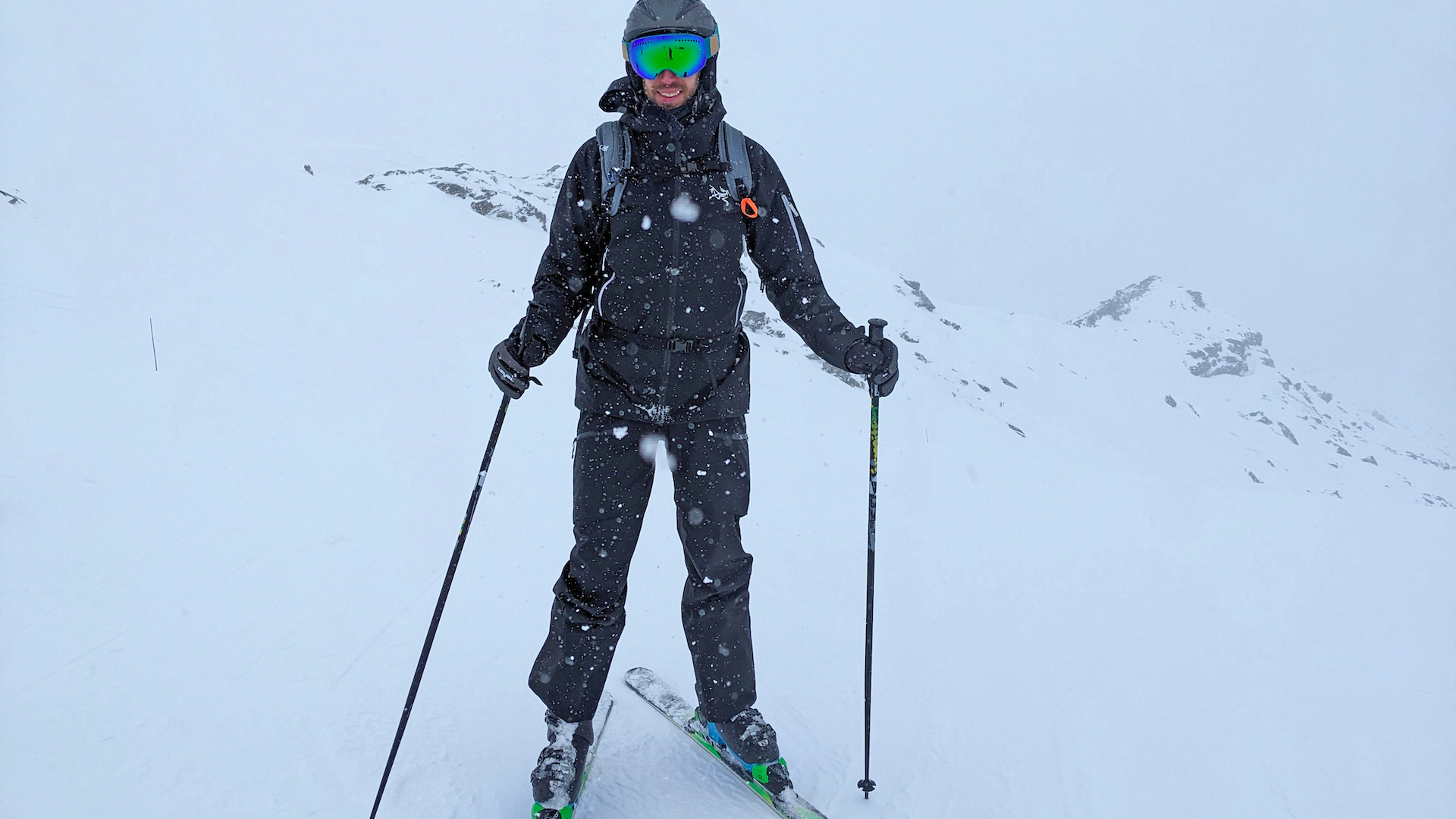
Canadian performance wear specialist Arc’teryx has become one of the most revered outdoor brands in the world, successfully garnering a reputation for quality mountain wear and developing a following in the world of fashion too. Thanks to the gorpcore movement, you’re as likely to see an Arc’teryx puffer at the mall or in a music video as on the slopes. But why is Arc’teryx so expensive?
Make no mistake, Arc’teryx kit is mostly designed for – and inspired by – the mountains. The brand calls the Coast Mountains of Western Canada home. It’s a range of staggering, snow-covered peaks, breathless wilderness regions, unexplored lines and unclimbed summits. This adventurer’s playground is perfect testing arena for the brand’s latest gear and Arc’teryx have an army of athletes and ambassadors on their roster. After all, the brand started life as a climbing gear company obsessed with improving what was on the market at the time.
So, to understand how a basement climbing equipment business grew into a premium, global outdoor brand selling everything from hiking backpacks and approach shoes to waterproofs and puffers, let’s take a flight back in time to the Dead Bird’s origins.
Meet the expert
Today's best deals
Arc'teryx's origins
I always remember the original Jurassic Park movie’s tagline: An adventure 65 million years in the making. Arc’teryx is named after the Archaeopteryx, an avian dinosaur from the late Jurassic period that’s considered to be the beginning of – or at least in the very early stages of – the evolutionary tree that leads to modern birds. In short, it's thought to be one of the first reptiles to develop the ability to fly.
The name was chosen because it represented the idea of accelerated evolution, and of innovation and development. The bent-back fossil logo has become a familiar sight in the backcountry and earned the brand its rather stark nickname: Dead Bird. So, when you don an Arc’teryx down jacket, you’re wearing adventure gear 140 million years in the making. Sort of…

The story of Arc’teryx as a business started not quite that long ago, in 1989. Climber David Lane was the founder and he originally named the business Rock Solid. Just as Rab founder Rab Carrington was frustrated with the quality of outdoor gear in England during the 1970s, Vancouver native Lane found himself unsatisfied with the climbing kit available in 1980s British Columbia and set about doing something about it.
From his basement, Lane began sewing together gear and selling it to other climbers, enjoying moderate success. He brought friend and business savvy fellow climber Jeremy Guard on board and they soon changed the brand’s name to Arc’teryx in 1991.

The brand’s Vapor harness was an early triumph, very much a tipping point in terms of the brand’s recognition on the climbing scene. Released in 1993, the harness was manufactured using thermal lamination technology, making it much more resistant to moisture than other products on the market at the time. Arc’teryx enjoyed further hits with the Bora backpack and the Targa Harness, before starting its journey into apparel in the mid 1990s, emboldened by a newly formed partnership with Gore-Tex.
In 2001, Arc’teryx was bought by French company Salomon Group, at that time a subsidiary of adidas. This was the end of Guard’s involvement and Lane had already sold his share of the business several years earlier. In 2005, adidas sold Salomon and, by extension, Arc’teryx to Finnish business Amer Sports. The corporate dance didn’t end there either, as Chinese business Anta Sports bought a majority stake in Amer Sports in 2019. These days headquartered in North Vancouver, Arc’teryx continues to create premium outdoor gear with the same ethos of quality that Lane and Guard pioneered, while it recently began to enjoy success in the fashion world too.
Always a better way – quality commitment

Arc’teryx designs its products to deliver ‘unrivalled durability and performance in extreme conditions.’ As part of its sustainability efforts (more on these in a moment), it strives to use the best materials to create products that will last as long as possible. This keeps gear in play, which is important to Arc’teryx, as the majority of a garment’s environmental impact occurs during manufacturing and sourcing, before it goes to market. It’s a similar ethos championed by the likes of American brand Patagonia and English brand Rab.
From the care that goes into the stitching of the fabrics and the precision of the seam taping to the field research and careful design that goes into each piece, Arc’teryx clothing and equipment is very well-made. However, this approach isn’t cheap, requiring skilled workers and a hefty research and development budget.
Material matters
To craft the most durable and high performing products, the materials and components that Arc’teryx source are of high quality. The brand also ensures its materials are sourced in the right way, exemplified by its approach to ethical down. All Arc’teryx’s down jackets meet the Responsible Down Standard (RDS), which means the birds involved in the sourcing are looked after properly. Arc’teryx can also trace the origin of all its down to farms in Eastern Europe, from where it’s shipped to California to the Allied Feather and Down facility, who have verified the animal welfare practices involved since 2008. Similar controls and verifications are in place for the wool and leather Arc’teryx put to use.

When Arc’teryx began designing apparel in the mid 1990s, it began working with Gore-Tex and they’ve enjoyed a fruitful partnership ever since. Gore-Tex features in many of Arc’teryx’s waterproof jackets and other rain-resistant apparel. However, anyone who’s ever bought a jacket sporting the Gore-Tex label will know that they tend to be on the pricier side. This is because you’re paying for two brands, or in the case of an Arc’teryx boot featuring a Gore-Tex membrane and a Vibram sole, you’re paying for three brands.
Arc’teryx has to pay for services, materials and components provided by these kinds of third parties, which is why a Gore-Tex jacket is usually pricier than a jacket featuring a brand’s proprietary membrane or why a boot with a Vibram sole will typically set you back more than one without. The reason Arc’teryx partner with the likes of Gore and Vibram is because they are the leaders in their field in terms of quality. In a similar way, Arc’teryx also uses Polartec fleece in its Kyanite, Rethel and Delta jackets, hoodies and pullovers.
Steadily increasing sustainability efforts
Arc’teryx takes sustainability seriously and puts particular focus on its product philosophy, responsible manufacturing practices and community engagement. It has started to strive to ensure the principal fabrics used are Bluesign approved, which is an internationally recognized sustainability standard. Products given the Bluesign thumbs up are crafted in a way that reduces water, energy and chemical use; improves health and safety by eliminating harmful chemical use and instilling safe workplace practices; and meet stringent standards for pollution control. Sustainability watchdog Good On You awards Arc’teryx an overall rating of 3/5 for their current sustainability efforts, saying that they could be doing more to reduce water waste in its supply chain. There's room for improvement but Arc'teryx are on the right track.

As a global brand, Arc’teryx has manufacturing facilities and suppliers across the world and it has recently been striving to do better by its suppliers, factory workers and other stakeholders. Only 5% of its product line is made in Canada and the brand is transparent about the status of its international supply chain: it has factories in El Salvador, Latvia, Bangladesh, Myanmar, Indonesia, Cambodia, the Philippines, China and Vietnam. In 2020, the brand began supporting its manufacturing facilities through the independent Fair Trade Certified programme, empowering workers by providing additional funds to improve their life chances. It’s not perfect yet but Arc’teryx expects 80% of its products to be Fair Trade Certified by 2025.
Similar to Patagonia’s Worn Wear initiative or Rab’s Second Stitch service, Arc’teryx began its gear refurbishment scheme in 2019, then called the Rock Solid Gear Program (a nod to the brand’s origin). It’s since become ReGear – on the website you can purchase Arc’teryx kit that has been lovingly restored. In Canada and the US, you can trade in your used gear and the Arc’teryx team will assess whether it’s suitable for refurbishment. If so, you’ll be reimbursed 20% of the original price in the form of a gift card. Of course, Arc’teryx also offer repair services for those who want to keep hold of their cherished garments too.

The brand has aligned itself with the principles of the Ellen Macarthur Foundation, a charity committed to creating a circular economy where materials are kept in circulation via processes like maintenance, reuse, refurbishment, repair, recycling and composting, thus eliminating waste and pollution. ReGear is just one part of Arc’teryx’s wider ReBird hub of initiatives that strive to keep gear in play.
Finally, in the fight against Climate Change, Arc’teryx has set targets from its 2018 baseline to reduce Scope 1 & 2 greenhouse gas emissions by 65% by 2030 and to reduce Scope 3 by 65% per unit of value added by 2030. Every year since 2019, the brand has released a Climate Report to share its progress against towards these targets, making itself accountable to its stakeholders.
Verdict
All these efforts towards quality and, more recently, sustainability come at a cost to the business, which is passed on to the consumer in the price of its products. It’s as simple as that. So, as a consumer, you have the choice of whether to pay more for kit from a brand, like Arc’teryx, that stands for durability, high performance and one that is striving towards a more sustainable future, or to pay less for gear from a brand that may have questionable practices.







